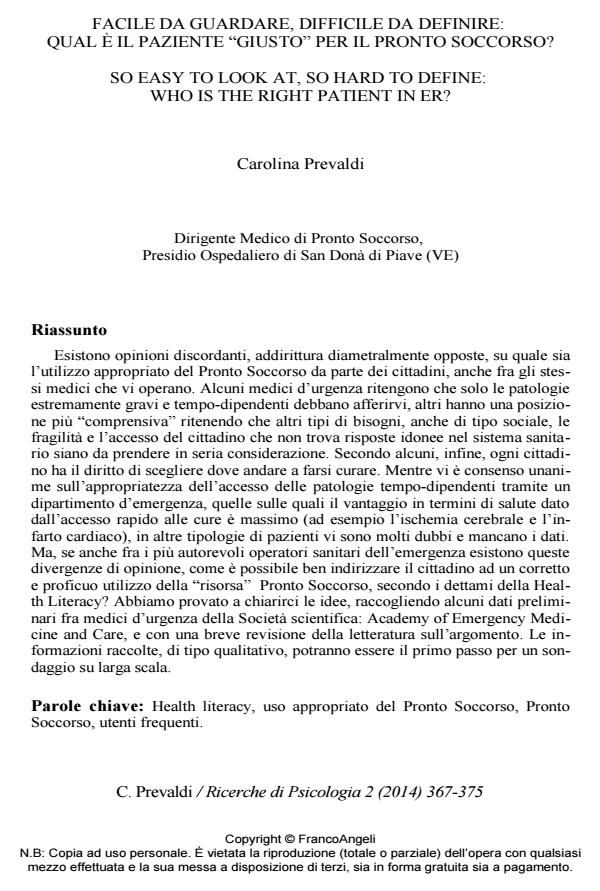So easy to look at, so hard to define: who is the right patient in er?
Journal title RICERCHE DI PSICOLOGIA
Author/s Carolina Prevaldi
Publishing Year 2015 Issue 2014/2
Language Italian Pages 9 P. 367-375 File size 155 KB
DOI 10.3280/RIP2014-002012
DOI is like a bar code for intellectual property: to have more infomation
click here
Below, you can see the article first page
If you want to buy this article in PDF format, you can do it, following the instructions to buy download credits

FrancoAngeli is member of Publishers International Linking Association, Inc (PILA), a not-for-profit association which run the CrossRef service enabling links to and from online scholarly content.
There are conflicting opinions, even diametrically opposed, about what is the proper use of of the emergency department (ER) by the public, even among those who work there. Some emergency physicians believe that only most severe and time-dependent illnesses should access, others have a more "comprehensive" position considering other types of needs, including social needs, the fragility and the access of the citizen who does not find answers appropriately in the health system are to be taken into serious consideration. According to some, finally, every citizen has the right to choose where to go to seek treatment. While there is consensus on the appropriateness of access of time-dependent diseases in the emergency department, which are those over which the benefits in terms of health is maximum (eg cerebral ischemia and cardiac infarction), in other types of patients, there are many doubts and lack of data. If such divergence of opinion exists among some of the most influential emergency physicians, how can we direct the citizen to a fair and effective use of the ER "resource", according to the dictates of Health Literacy? We tried to clarify our position, with an overview of literature and by collecting some preliminary data among emergency physicians of the Italian Scientific Society: Academy of Emergency Medicine and Care. The qualitative informations so collected might be the first step in a large-scale survey.
Keywords: Health literacy, appropriate use of emergency department, Emergency Department, frequent users.
Carolina Prevaldi, Facile da guardare, difficile da definire: qual e il paziente "giusto" per il pronto soccorso? in "RICERCHE DI PSICOLOGIA " 2/2014, pp 367-375, DOI: 10.3280/RIP2014-002012